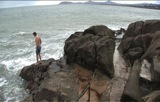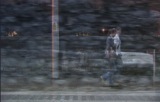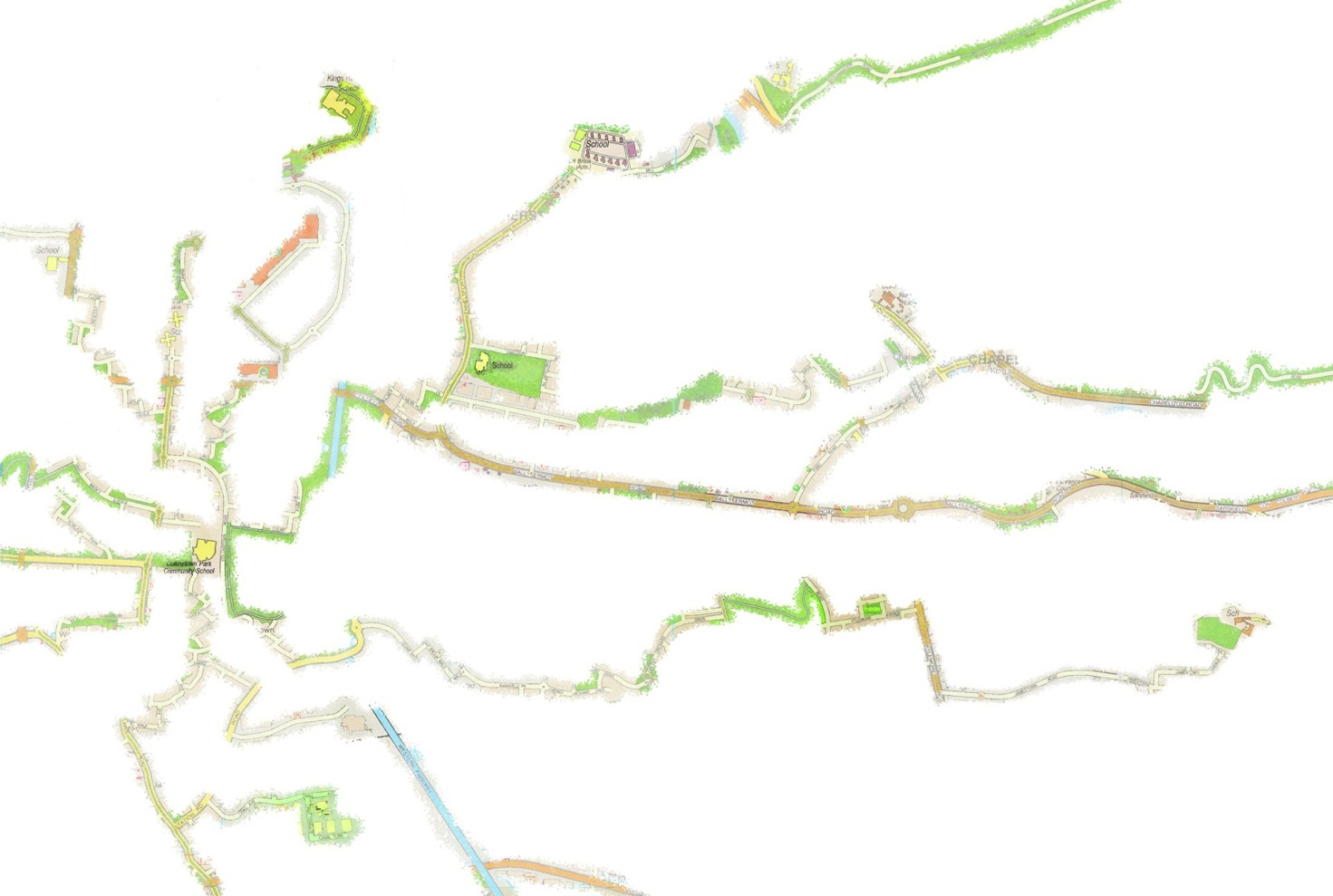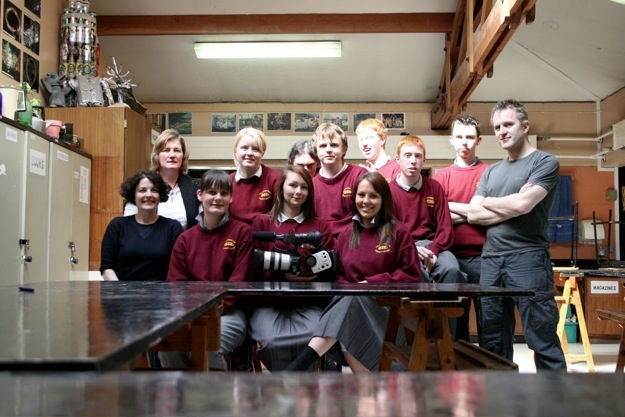


You'll Come And Find The Place (03’30”)
with Jean Philippe Renoult
Blowin’ down the motorway (01’31”)
With Joe Naughton
Gangland (extact 01’52”)
PC can’t play these clips?




Vico Road (extract 03’14”)
With Jobst Graeve




23 April 2009: Moving Dublin (the Book and the Film) launched by Minister Eamon Ryan at the Broadcast Gallery Dublin.


Luas Carol (extract ‘Museum’ 01’20”)
With with J P Renoult & Dinah Bird


The Observer Effect (19’50”)
With students of Collinstown Park CC



The essential paradox of filming everyday journeys is that once you point a camera at something, it ceases to be everyday. People are inhibited by the camera, or they perform for it, and the camera is naturally drawn to ‘remarkable’ things: beautiful shots and strange happenings. In Life of Saint Mary we tried to combat that (with mixed success) by giving small cameras to small children. In Clondalkin we decided to address the question of the camera more directly.
The Observer Effect (also termed reactivity) is a phenomenon that occurs when individuals alter their performance or behaviour due to the awareness that they are being observed. There are several different categories of the observer effect, including the Experimenter Effect, where a scientist unintentionally communicates his expectations to the subject who alters his behaviour accordingly, and, my favourite, the Pygmalion Effect, where students alter their behaviour in order to please a teacher. In March 2008, when the art class of a suburban secondary school was asked to film their daily journeys, the Observer Effect came into action. Whether the pupils changed their behaviour to please their teachers or ourselves, I do not know, but they were certainly conscious of entertaining each other. We worked with a small group of 5th year art students, seventeen years old, from Collinstown Park Community College. The students were taught to use a professional video camera and discussed the important questions of community and everyday movement, and what that means to an adolescent today. We felt it was important not to interfere with their observations and, as in Life of Saint Mary, we asked the students to film their own everyday journeys, with complete freedom to adopt whatever filming strategy they felt was necessary. We visited the school again in May of the same year, talked to the students about their experiences and carried their tapes to Paris. Several days later when we settled down with a cup of tea to view the cassettes we met with some surprises.Collinstown Park is one of the few secondary schools in Dublin that really serves a compact community. The students all walk the short distance from their home to school, usually in small groups. Most of their paths cross expanses of empty grassland, neither country fields, nor city parks, but the suburban greens so popular in urban planning in our already oh so green Island. Despite the emptiness of the greens, the loops of our camera-carrying teenagers did manage to intersect with some other loops. The Collinstown teenagers applied a liberal interpretation to the notion of daily journeys, allowing us glimpses into their homes, introducing us to local characters, analysing the courting habits of their contemporaries, and presenting strange vegetal formations reminiscent of male reproductive organs. We see a family’s Saturday morning antics with a Wii video game, meet a warrior crow that dies in battle, and pay a late night visit to a frazzled neighbour who is the longest surviving resident of the area. All of these meanderings are liberally sprinkled with hilarious but often obscene commentaries. Rather than buttoning up and presenting their best behaviour to the surveying eye of the camera, the teenagers competed with each other in salacious zeal. This leads us to another paradox of filming the everyday. Do we use the compromising footage, with possible breaches of privacy or defamation? Is the alternative to act as censors and suppress it? The school maintained the power to suppress the film if they saw fit, and given the nature of the material, this seemed like a real possibility.
But the material was great, and we wanted to use it. In June, though the school year was over, we called a final emergency session with the class. How exactly could we edit it so that it would be acceptable to the school, while exploiting the potential of the footage? Almost all of the students turned up, and we spent several hours turning over the possibilities. Together we developed an editing technique, using our classroom discussions for continuity and cutting between the footage that the students had filmed and their own commentaries and questions. The result is The Observer Effect, a classroom experiment, a movie, and a glimpse into the carefully dissimulated private world of today’s urban teenagers.
The Observer Effect 19’50”
PREMISES
PRACTICES
PLACES
You'll come and find the place
PRODUCTION
Moving Dublin explores the everyday world of movement in Dublin and its vast sprawling suburbs spreading out west from the coastal city. We look at how far the contemporary world of the Dublin commuter has strayed from the civic realm it constituted when Joyce wrote the Wandering Rocks chapter of Ulysses.
Moving Dublin is to be published in the form of a book and DVD in March 2009 by Gandon Editions
Moving Dublin has been commissioned by South Dublin County Council through In Context 3 and funded under the Department of Environment, Heritage and Local Government’s Per Cent for Art Scheme.
Digital Video
2008
In Production
Collinstown Park
Community College
Coordinator
Fiona Delaney
Teacher
Marie O'Connell
With
April Gallagher
Conor Miley
Kenneth Dunne
Robbie Smith
Paul Hughes
Sean Price
Stacey McKenna
Watch this video on











